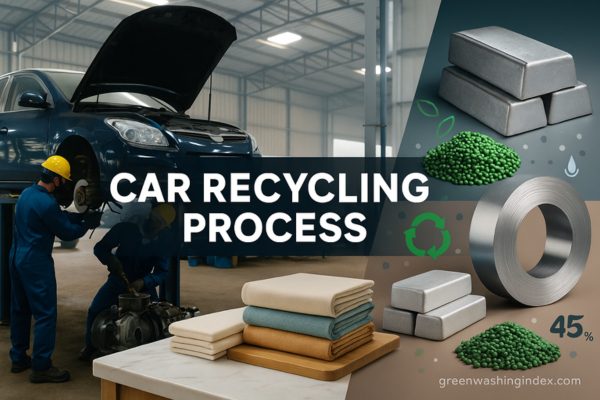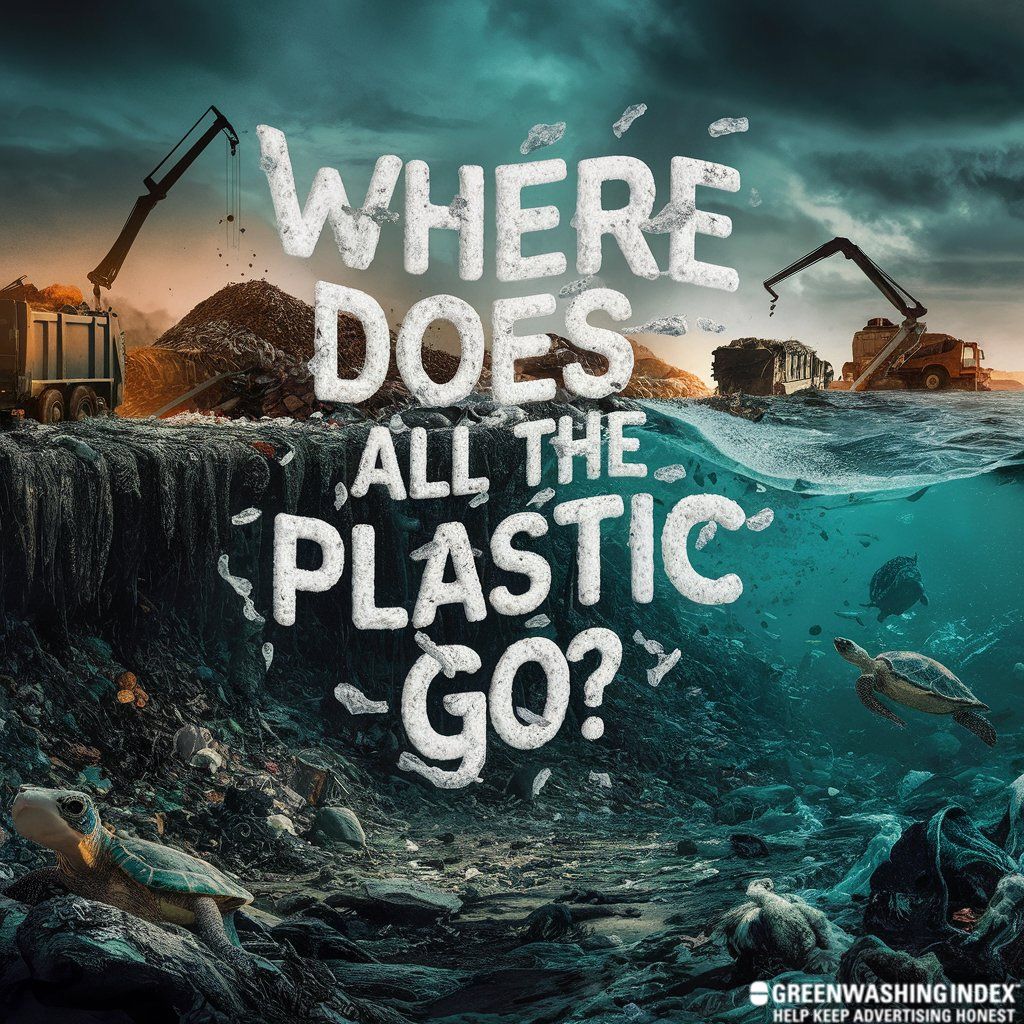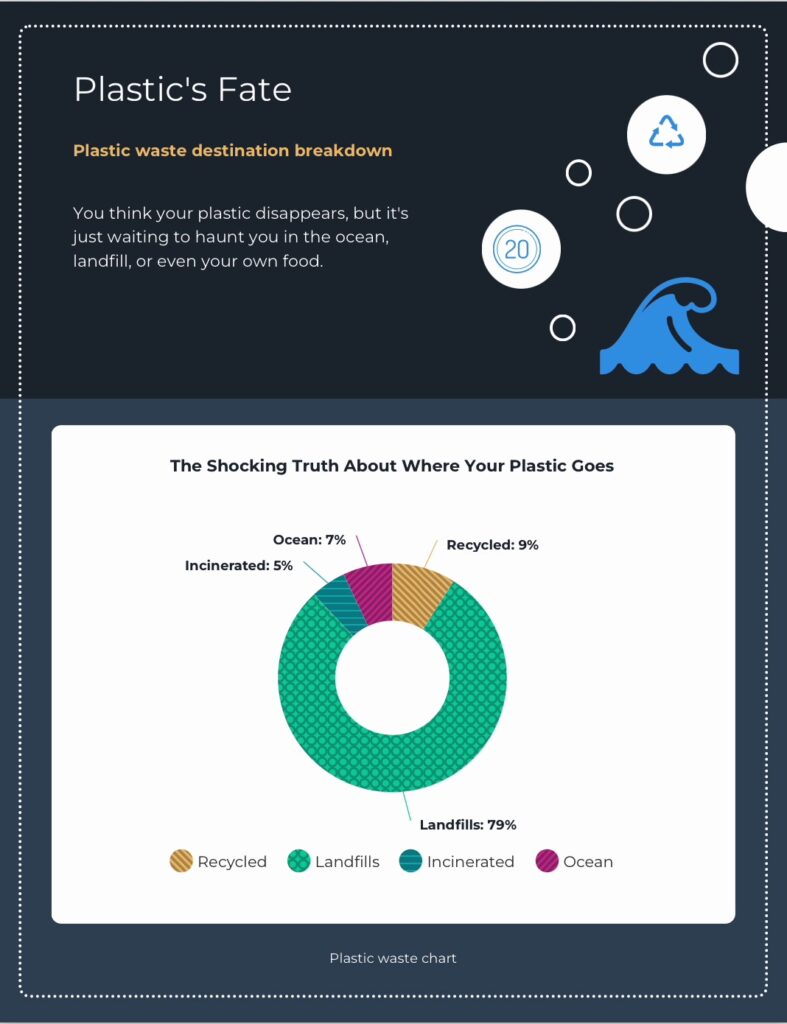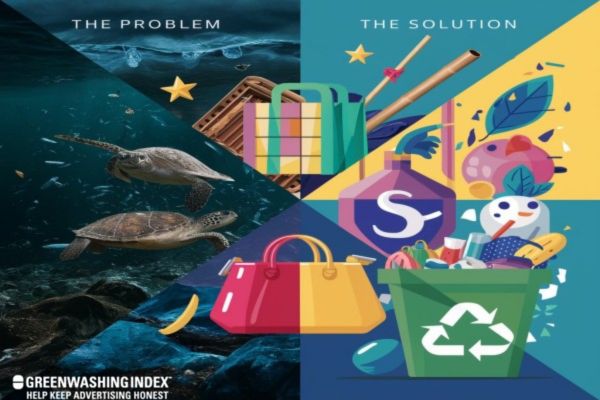

When we think about plastic waste, it’s easy to toss it in the bin and forget about it. But where does all the plastic go? The journey it takes is far more alarming than we might imagine. From inadequate waste management systems to littering and industrial activities, plastic often ends up in landfills or, worse, our oceans.
This isn’t just an environmental issue; it’s a global crisis threatening wildlife and our ecosystems. So, how do we tackle this escalating problem, and what steps can we take to mitigate its impact? Let’s explore this urgent matter further.
When we think about where all the plastic goes, it’s clear that much of it ends up in our environment through various pathways. Mismanaged waste, especially in developing countries, contributes significantly to the plastic that leaks into our oceans. Surprisingly, even though only a small percentage of plastic waste reaches the seas, the impact on marine life and ecosystems is considerable.
Plastic waste enters the environment through a combination of inadequate waste management, littering, and industrial activities. When we don’t dispose of plastic properly, it often ends up in places it shouldn’t be. Mismanaged waste, especially in developing countries, plays a huge role.
Many areas lack the infrastructure to handle the sheer volume of plastic waste produced daily. As a result, piles of plastic can accumulate in landfills, and some of it escapes into the natural environment. Littering is another significant contributor. When we throw away plastic items carelessly, they can be carried by wind or water, ending up in rivers, lakes, and eventually the ocean. Even when we think we’re just tossing something small, it adds up over time.
Industrial activities also contribute to plastic pollution. Factories producing plastic items mightn’t always handle their waste correctly, leading to plastics leaking into nearby land and water sources. Manufacturing processes can release tiny plastic particles, known as microplastics, into the environment, which are especially troublesome because they’re hard to clean up.
To tackle these issues, we need better waste management systems, stricter regulations, and greater public awareness about the impact of plastic pollution.
Mismanaged waste, littering, and industrial activities greatly contribute to the leakage of plastic into our oceans. When we don’t properly manage our waste, plastic items can easily escape into the environment, eventually reaching waterways that lead to the sea.
Littering is another major issue. When people discard plastic items carelessly, the wind and rain can carry them into rivers and oceans. Industrial activities add to the problem by producing plastic waste that can spill into the environment during manufacturing, transportation, and disposal processes.
Here are some key factors:
Might Be Helpful: Plastic Bag Recycling: Easy Steps for a Clean Planet
We produce an incredible amount of plastic, with global production reaching 460 million tonnes in 2019. Each year, about 350 million tonnes of plastic waste are generated, much of which comes from single-use items. These single-use plastics have a significant impact on our environment, contributing to pollution and filling up our landfills.
In the last two decades, global plastic production has skyrocketed, reaching an astounding 460 million tonnes in 2019. This rapid increase has led to a significant rise in plastic waste generation. Each year, the world generates approximately 350 million tonnes of plastic waste. Unfortunately, only a small fraction of this waste is properly managed.

One of the startling facts is that only 9% of all the plastic ever produced has been recycled. This means that the vast majority of plastic ends up in landfills or, worse, pollutes our natural environment. For instance, in the United States alone, plastic made up 18.5% of municipal solid waste in 2018, most of which went to landfills.
It’s also alarming to know that about 1-2 million tonnes of plastic waste end up in the oceans annually. Most of this ocean plastic pollution comes from mismanaged waste in developing countries, highlighting the global challenge of effective waste management.
As we look at these numbers, it’s clear that the issue of plastic waste is a monumental problem that requires urgent and collective action from all of us.
Single-use plastics, which are designed for immediate disposal after a single use, exacerbate the plastic waste crisis to a great extent, contributing massively to environmental pollution. These plastics are found everywhere in our daily lives, from grocery bags to water bottles and food packaging. Their convenience comes at a significant environmental cost. Most of these plastics aren’t biodegradable and can linger in the environment for hundreds of years, causing both visible and invisible harm.
Here are some key impacts of single-use plastics on the environment:
Might Be Helpful: Portable Greenhouse Guide: Grow Greens Any Season!
Plastic pollution has severe effects on wildlife and ecosystems, disrupting habitats and harming animals that ingest or become entangled in plastic waste. We also face risks from microplastics, which can enter the food chain and potentially impact our health. Understanding these issues helps us see the broader implications of our plastic use and waste management practices.
The pervasive presence of plastic waste wreaks havoc on wildlife and disrupts delicate ecosystems. Animals often mistake plastic for food, leading to severe health problems or death. Birds, fish, and marine mammals ingest plastic debris, which can cause internal injuries, blockages, and starvation. For example, sea turtles frequently consume plastic bags, confusing them with jellyfish, their natural prey.

Our ecosystems also suffer from the physical presence of plastic waste. Plastic debris can smother coral reefs, reducing their ability to support marine life. Microplastics, tiny plastic particles, infiltrate soil and water, affecting plant growth and contaminating water sources. This contamination can travel up the food chain, impacting various species and their habitats.
Plastic pollution alters the natural balance of ecosystems by introducing foreign materials that don’t decompose. This disruption can lead to the decline of certain species and the overpopulation of others, upsetting the intricate interdependencies within these environments.
As we continue to produce and dispose of plastic at alarming rates, the strain on wildlife and ecosystems grows. We must take action to mitigate this damage by reducing plastic use and improving waste management practices.
Microplastics pose significant risks to the food chain, infiltrating everything from plankton to the fish we eat. These tiny plastic particles, often less than 5 millimeters in size, can be ingested by a wide range of marine organisms, affecting their health and, ultimately, ours. When small creatures like plankton consume microplastics, these particles move up the food chain as larger animals eat smaller ones.
Let’s consider some key points about how microplastics impact the food chain:
Understanding these risks helps us realize the importance of addressing plastic pollution to protect our food chain and health.
Might Be Helpful: Sustainable Clothing Secrets: Why It Matters To You?
Let’s talk about how we manage plastic waste and the challenges we face. Despite our efforts, only 9% of all plastic ever produced has been recycled, leaving a huge amount in landfills and incinerators. With 18.5% of municipal solid waste in the US being plastic, we need better solutions for recycling and disposal.
Tackling plastic waste management presents substantial challenges due to low recycling rates and inefficient disposal methods. We’ve got a lot of work to do if we want to make a real difference.
Recycling plastic isn’t as simple as tossing it into the right bin. Many types of plastic can’t be recycled together, and contamination with food or other materials makes recycling even harder. Plus, the economic aspect plays a big role; it’s often cheaper to produce new plastic than to recycle old plastic.
Contamination: Food residue and other materials make plastic less recyclable.
These challenges mean that a lot of plastic ends up in landfills or, worse, in our oceans. Addressing these issues requires a combination of better infrastructure, more education on proper recycling practices, and changes in consumer behavior. If we all work together, we can make a significant impact on reducing plastic waste and improving recycling efforts.
Often overlooked, the statistics on plastic waste in landfills and incineration reveal the sheer scale of our plastic problem. In the United States alone, landfills received 18.5% of municipal solid waste as plastic in 2018. That’s a significant amount considering how much waste we generate daily.
Globally, around 350 million tonnes of plastic waste are produced every year. Most of this doesn’t get recycled; instead, it ends up in landfills or incinerators.
When plastic waste is incinerated, it can release harmful chemicals into the air, contributing to pollution and health issues. Incineration also doesn’t eliminate the waste; it just reduces its volume. Additionally, the energy recovery from incineration isn’t as efficient or sustainable as other methods.
Landfills, on the other hand, create long-term environmental problems. Plastics in landfills can take hundreds of years to decompose. During this time, they can leach harmful substances into the soil and groundwater. This makes managing plastic waste incredibly challenging.
To tackle plastic pollution, we need to focus on reducing plastic production and consumption. We should also work on improving waste management systems around the world.

One effective way to curb plastic pollution is by implementing stricter regulations on plastic production and encouraging the use of sustainable alternatives. By reducing the production of single-use plastics and promoting environmentally friendly materials, we can greatly reduce the amount of plastic waste generated each year.
Here are some strategies we can adopt:
Enhancing global waste management systems is essential if we want to tackle the plastic pollution crisis effectively. Right now, our planet is drowning in plastic waste, and it’s clear that better solutions are needed. We can notably reduce the amount of plastic that ends up in our oceans and landfills by improving how we manage waste on a global scale. This means investing in better infrastructure, education, and technologies.
Here are some key strategies we should focus on:
Might Be Helpful: Food Waste Reduction: Simple Tips for Major Impact
To reduce plastic use, we should start by implementing Extended Producer Responsibility schemes, which make companies accountable for the entire lifecycle of their products. Additionally, promoting recycling and sustainable alternatives can help minimize plastic waste.
We should implement Extended Producer Responsibility (EPR) schemes to hold manufacturers accountable for the entire lifecycle of their plastic products. EPR schemes require producers to take responsibility for the collection, recycling, and disposal of their products once consumers are done using them. This means companies must design products that are easier to recycle, reduce their use of harmful materials, and create plans for dealing with waste.
By implementing EPR, we can shift the burden of plastic waste management from consumers and municipalities to the companies that produce plastic in the first place. This can lead to a significant reduction in plastic waste and encourage manufacturers to innovate in more sustainable ways. For example, companies might start using materials that are easier to recycle or develop packaging that generates less waste.
EPR schemes have already shown success in some countries. For instance, in Germany, EPR policies have led to high recycling rates and reduced landfill use. If more countries adopt similar measures, we can make a substantial impact on the global plastic waste problem. It’s time we hold producers accountable and push for a cleaner, greener future.
Encouraging recycling and sustainable alternatives is essential if we’re serious about tackling the plastic waste crisis head-on. Recycling helps reduce the amount of new plastic that’s produced and keeps waste out of landfills and oceans. However, we also need to promote sustainable alternatives to plastic to make a significant impact.
Let’s consider some practical steps we can take:
While promoting recycling and sustainable alternatives is essential, changing our daily behaviors to reduce plastic consumption will make an even greater impact. To truly tackle the plastic problem, we need to rethink how we use plastic in our everyday lives. By making small changes, we can collectively reduce the demand for plastic and decrease the amount of plastic waste.
Here are some practical steps we can take:
No, unfortunately, not all plastic gets recycled. Only a small percentage of plastic waste is actually recycled, while the rest ends up in landfills, incinerators, or the environment.
The plastic we throw away often ends up in landfills where it can take hundreds of years to decompose. Some of it is also incinerated, which releases harmful pollutants into the air. A significant portion also leaks into the environment, polluting our oceans and harming wildlife.
A large part of the plastic we’ve used over the years has ended up in landfills, where it will likely stay for centuries. Some have been incinerated, while a substantial amount has leaked into our oceans and other parts of the environment, polluting ecosystems and harming wildlife.
We need to address plastic waste urgently. It’s evident that plastic pollution harms our environment and wildlife. By enhancing waste management systems, reducing single-use plastics, and supporting recycling, we can make a difference.
We should all take responsibility for our plastic use and advocate for global action. Let’s work together to protect our planet and guarantee a cleaner future for everyone. Reducing plastic waste is a challenge we must tackle now.

Don't let aphids, slugs, and caterpillars ruin another plant. Take back control with simple, natural methods that actually work.